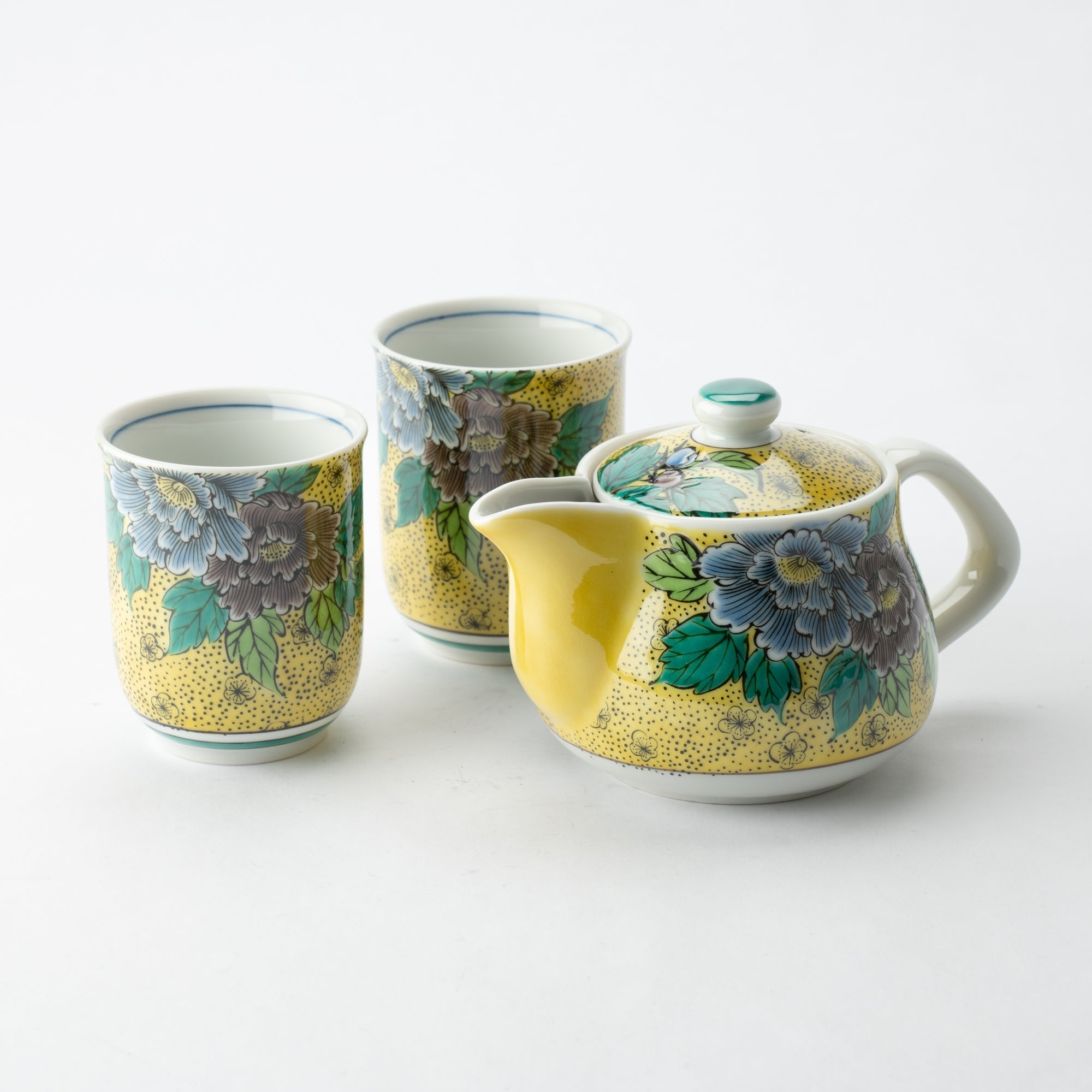


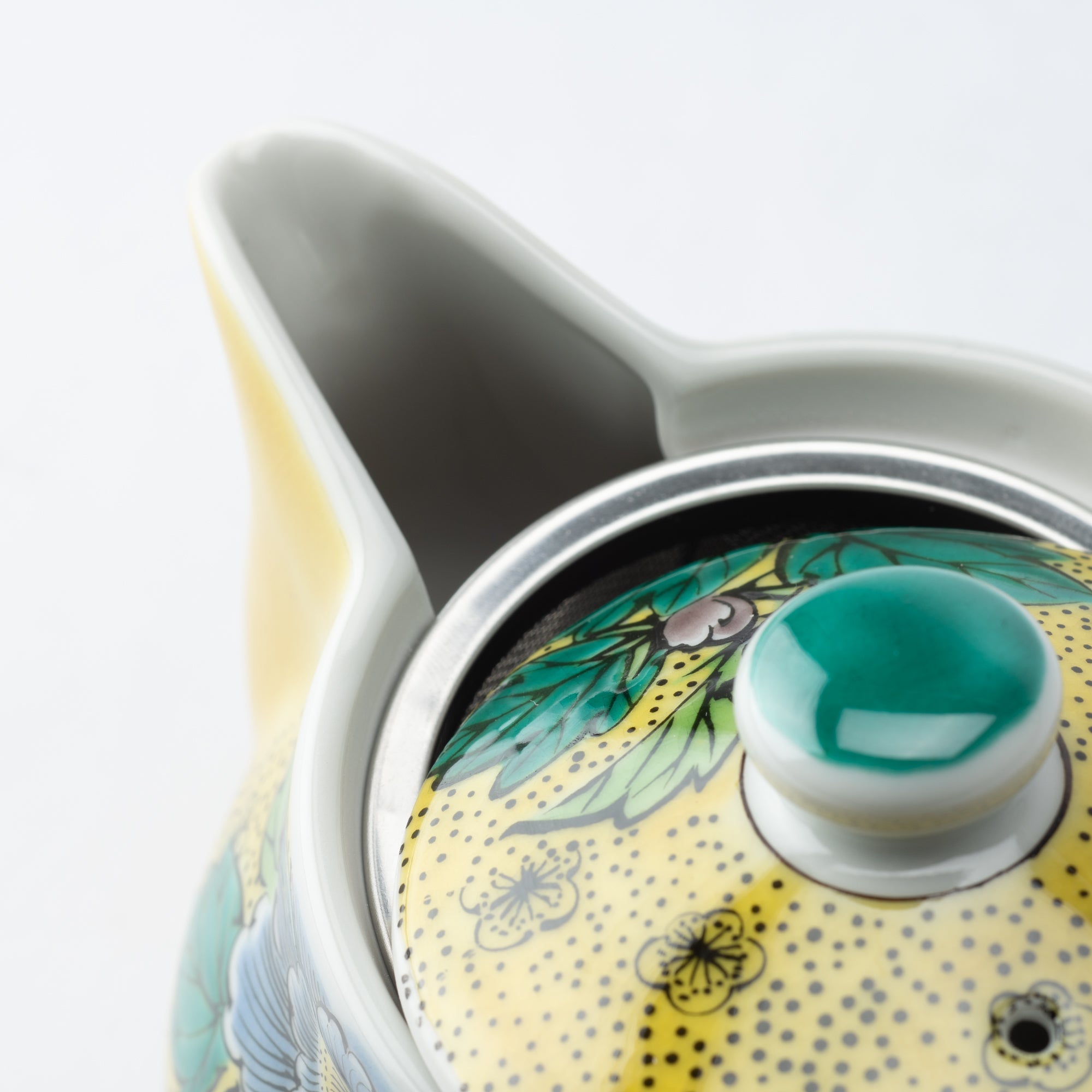
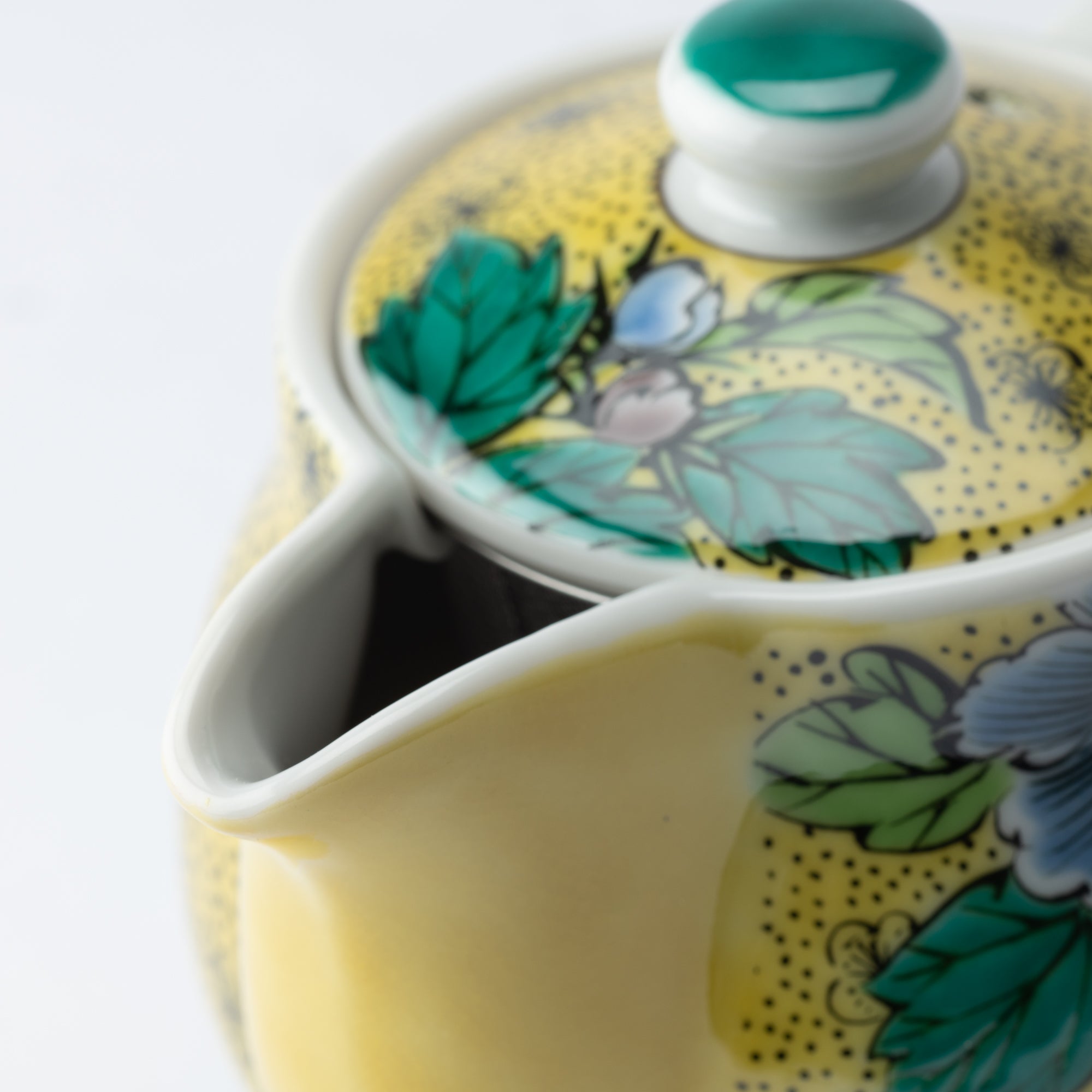
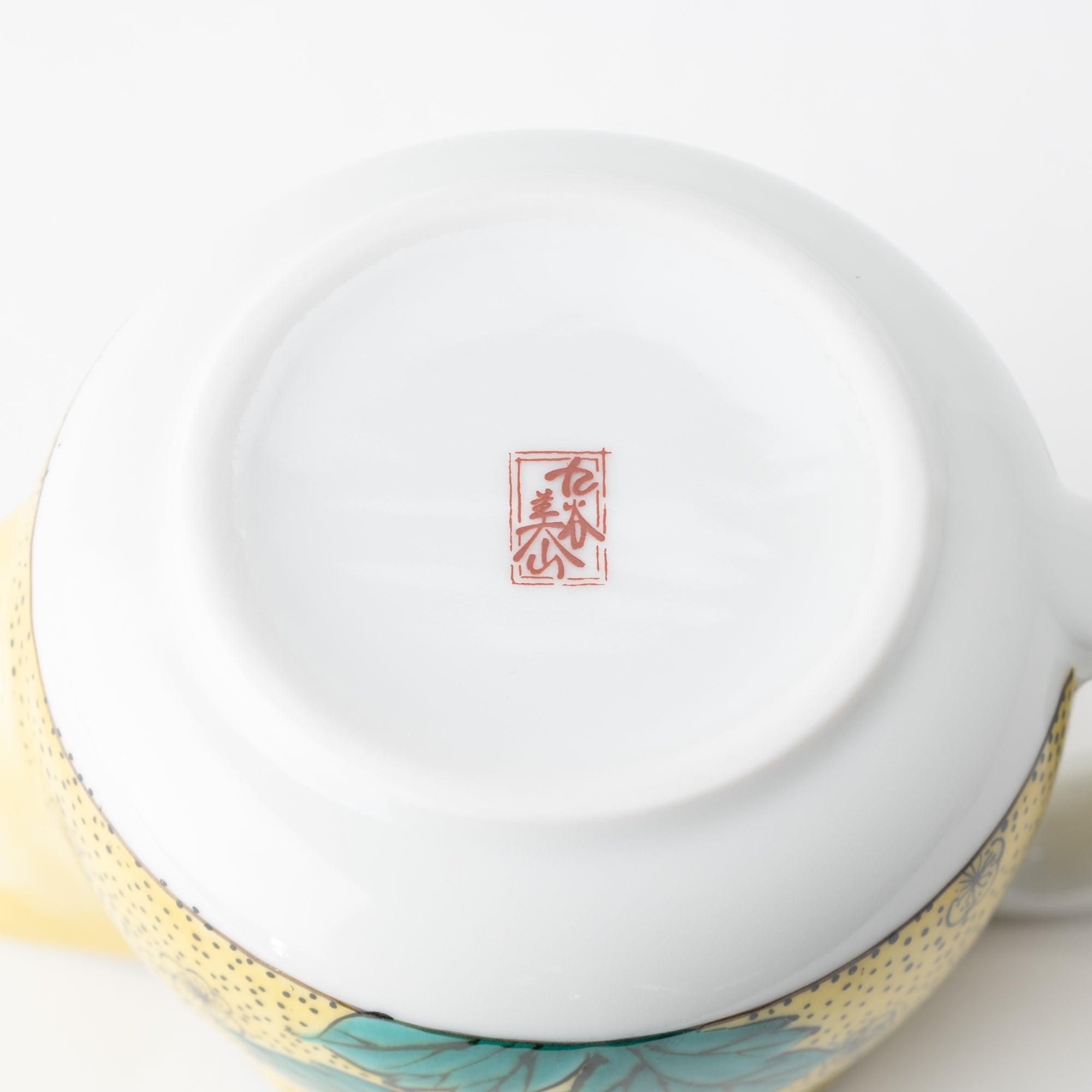
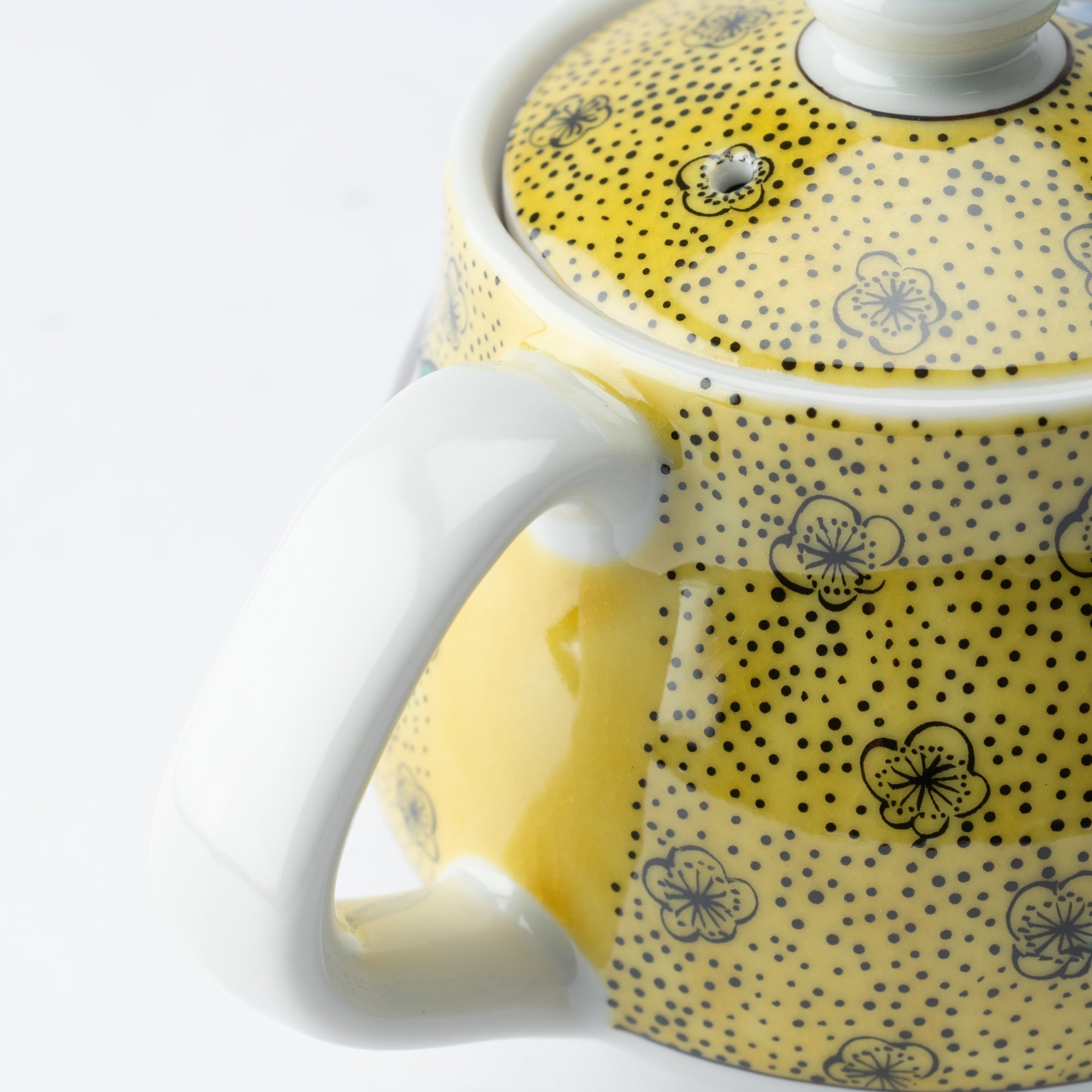
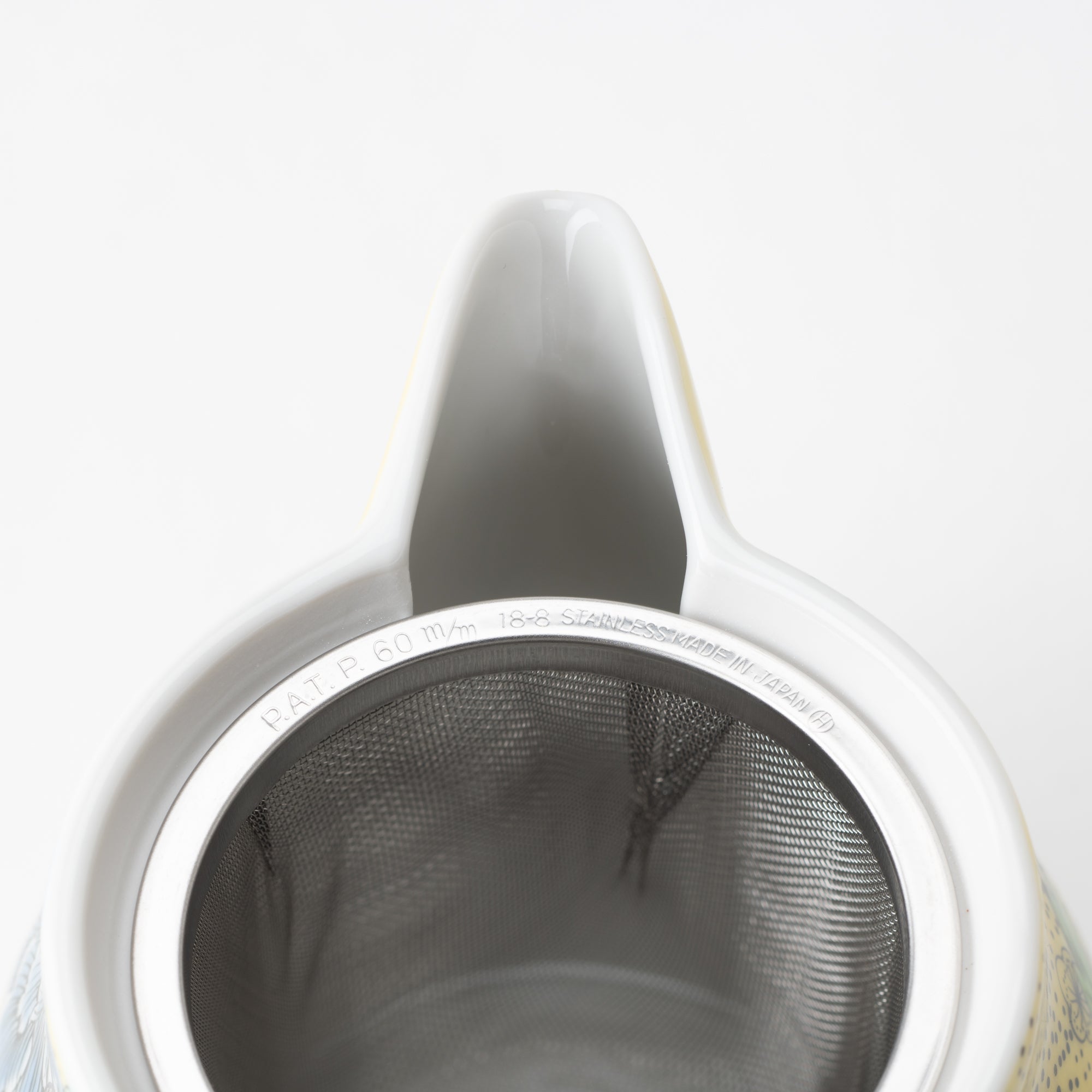
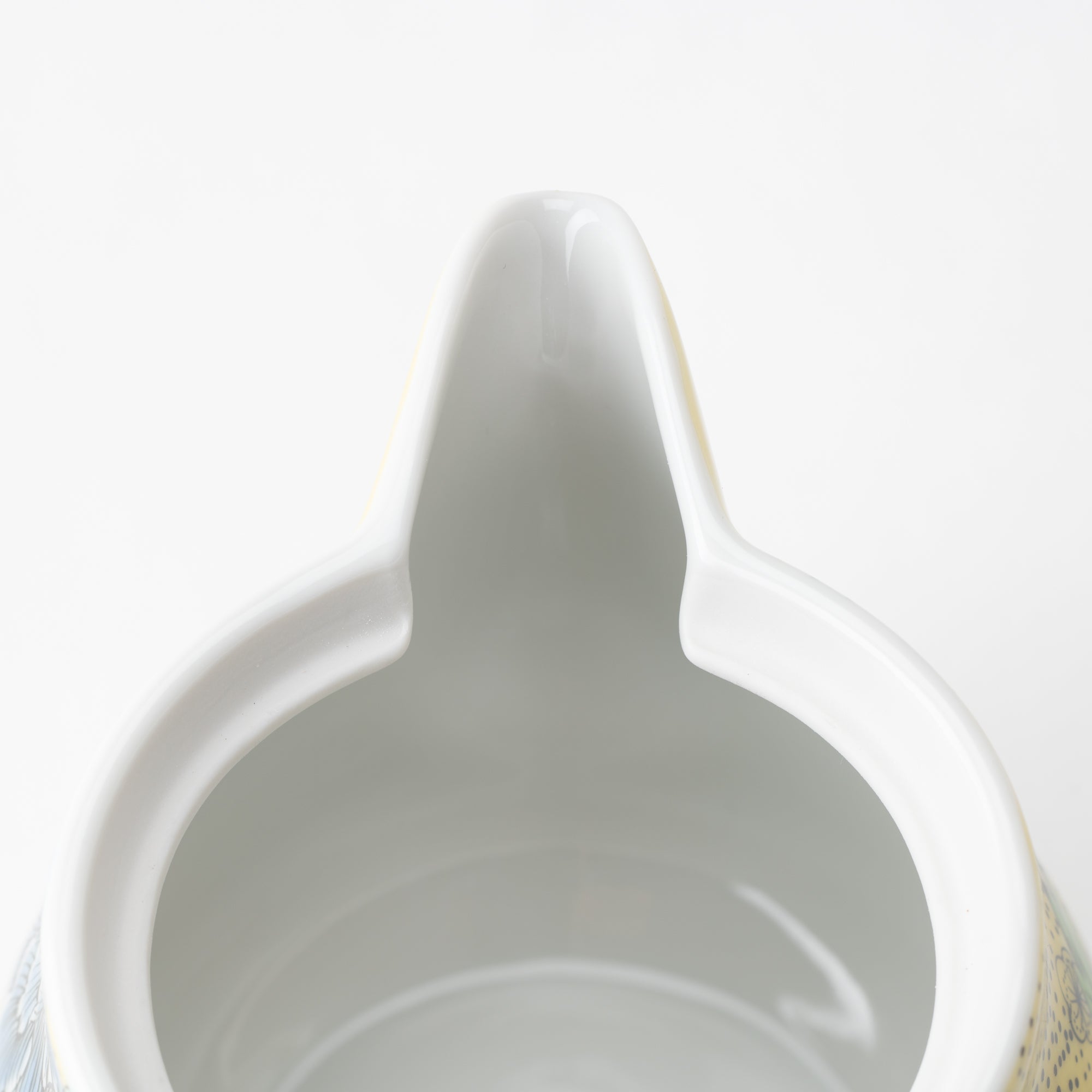
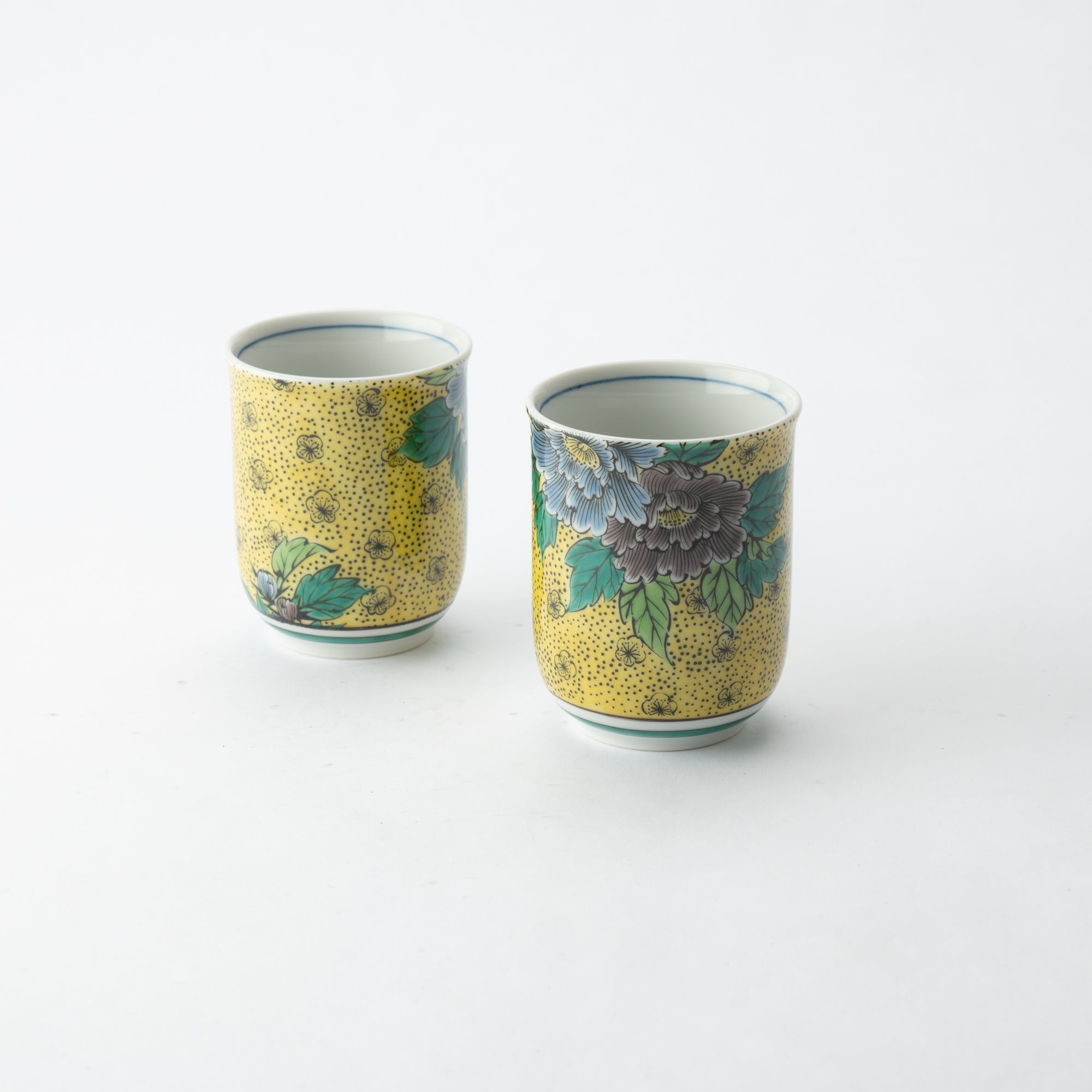
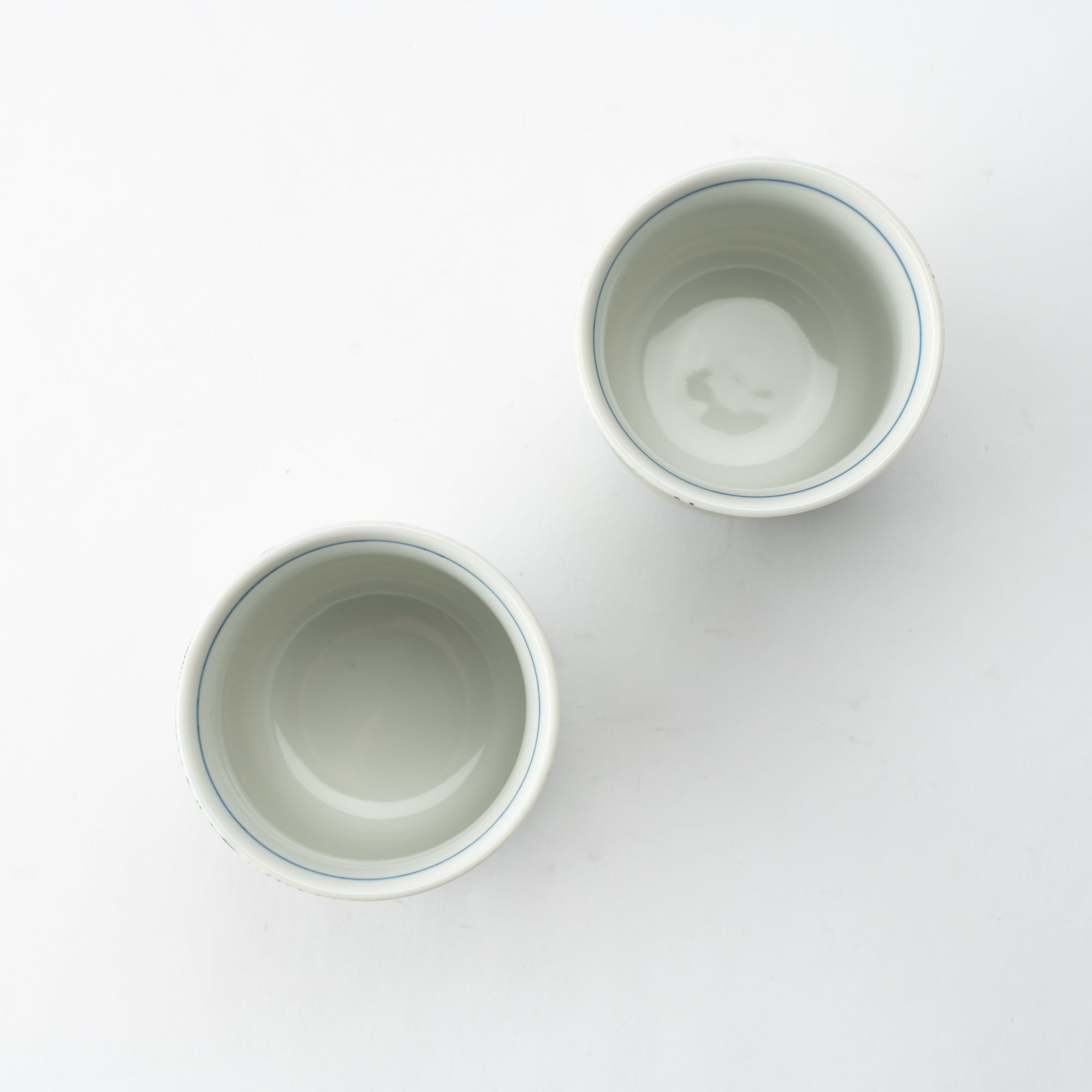
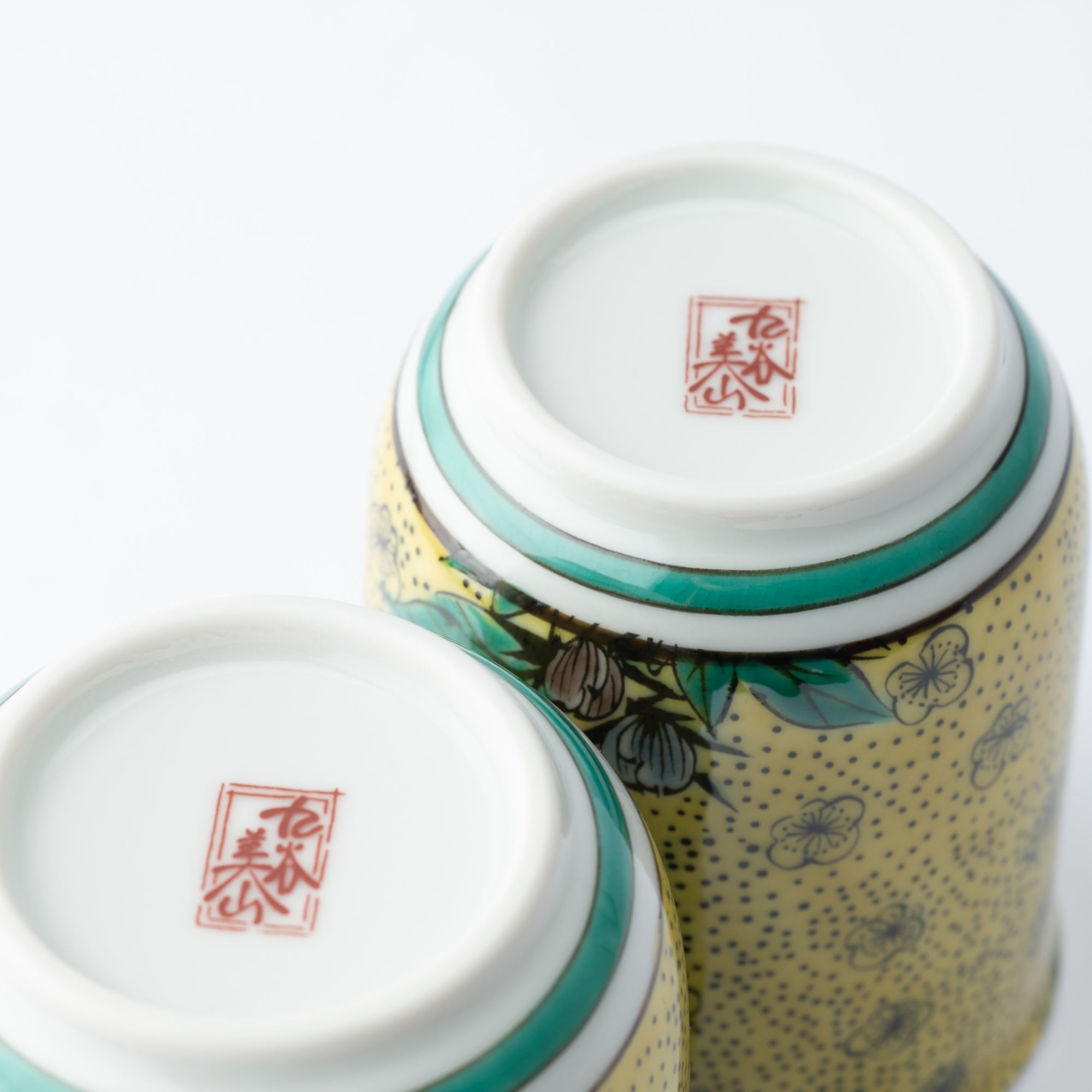
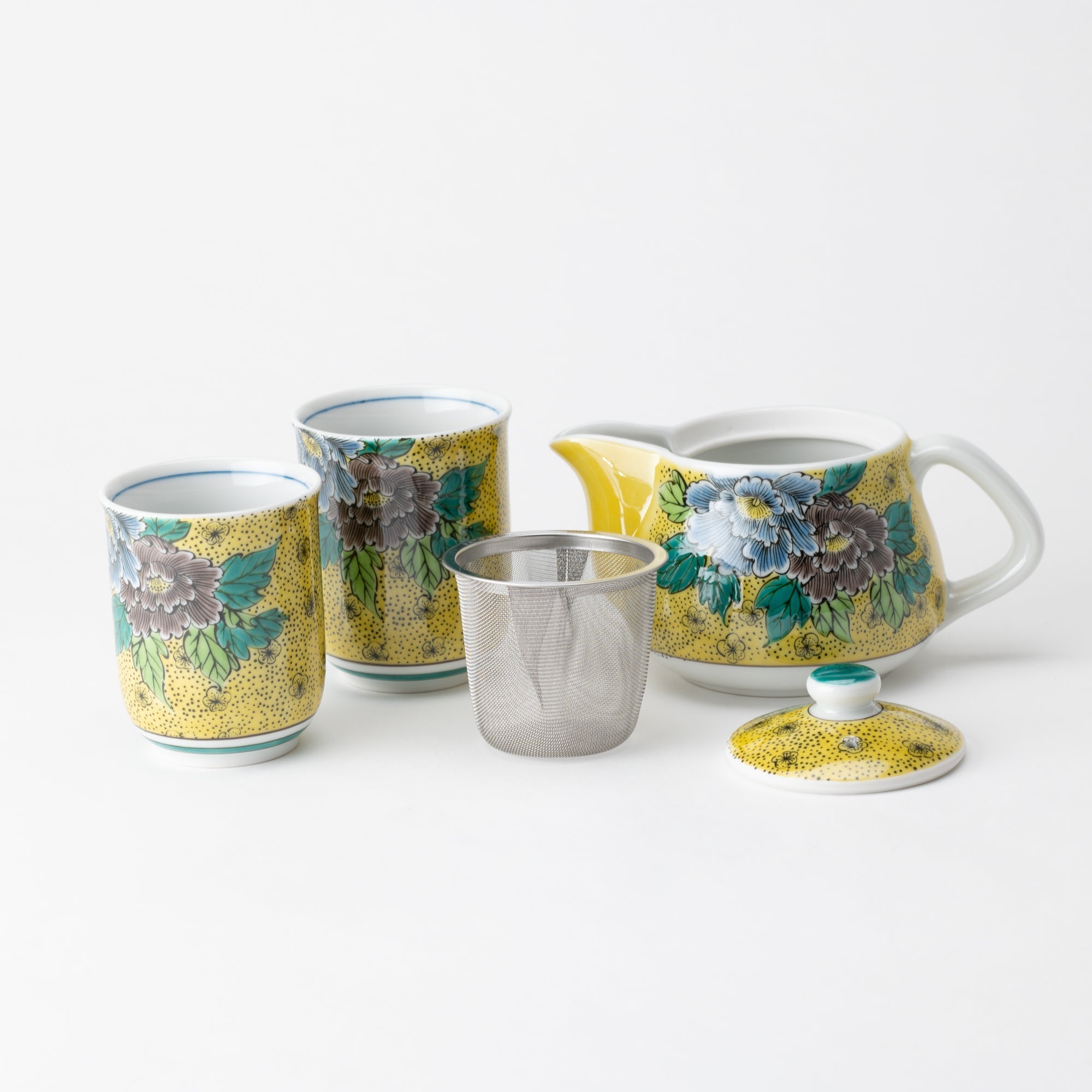
Yoshidaya Peony Kutani Japanese Teapot Set
Estimated Shipping Widget will be displayed here!
This beautiful teapot set is decorated with with large peonies in Yoshidaya style.
A skilled craftsman finishes each piece by hand to create a truly unique pattern; there are no two alike. It will create a blissful tea time at home.
The capacity is 360ml(12.2oz), which is enough to fill 2 teacups.
The stainless tea strainer is attached inside of the teapot.
The simple shape of the spout is easy to wash.
You can create a more formal impression by combining it with this coaster.
Perfect for a special occasion when enjoying Japanese tea with family and guests, and also an amazing gift for your loved one. This tea set, made by Japanese artisans using the traditional techniques of Kutani ware, is a design that will never go out of style and can be used for a long time.
For more Japanese tea item collection, tap here.
PRODUCT DETAIL
- Quantity: Set includes 1 tea pot and 2 cups(different size)
- Dimension: [Bigger cup]D7.6cm(3in) x H8.3cm(3.3in), [Smaller cup]D6.8cm(2.7in) x H7.6cm(3in)
- Capacity: [Teapot]360ml(12.2oz), [Bigger cup]240ml(8.1oz), [Smaller cup]200ml(6.8oz)
- Material: Porcelain - Kutani ware
- Origin: Made in Japan
FEATURES
Yoshidaya Style
Yoshidaya Style, which is one of the most famous traditional style of Kutani Ware, was first created by Yoshidaya Denemon in 1824. The four basic colors that are used within this plate are yellow, green, and aubergine. This style restored the painting style of Aote Ko-kutani. Yoshidaya painted the surface of the plate completely using only the 4 colors, yellow, green, dark blue and purple and never red.
Choose options















